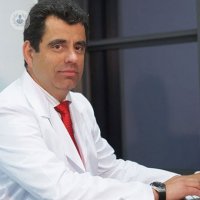La estadística da esperanzas a enfermos de cáncer próstata
Written by:Undergoing surgery having prostate cancer has been a matter of controversy among Urology specialists on whether it is advisable or not. As Dr. Dr explains. Díaz Bermúdez, expert in laparoscopic surgery and prostate cancer, until recently was discarded directly, but recent statistics rethink the model.
The Journal Clinic Oncology in 2013 published statistical studies on prostate cancer patients that are currently a reference for specialists around the world.Until recently, the possibility of surgery in cases of patients with prostate cancer was not considered too much, as it is an aggressive treatment and offered little possibility of curing the patient.
What changes is that in certain cases, the evolution of the cancer is so slow, that although the surgery does not completely remove the tumor, it could extend the patient's life longer than it is likely to be due to other natural causes.
Always based on statistical projections, these patients are considered the most at risk by the scope of the tumor (called T3) are those who benefit most from surgery.
The study for years of the biopsies of hundreds of patients allows to determine different profiles of the disease according to its aggressiveness and development. This, in some way will allow to evaluate which are the cases in which the surgery has a greater possibility of positive results, also taking into account that it is about aggressive actions with the organism.

Surgery yes or surgery, no?
Until recently, when there were high chances of metastasis, surgery was often discarded directly. Now the statistics rethink the model. There is still a high degree of uncertainty due to the infrasound, but it is about carrying out certain statistical equations with biopsy results, and according to the parameters that are shown, a scale of aggressiveness of the different types of tumors is started to make more accurate decisions.
This scale numbered from 2 to 10 indicates the danger of cancer. From 6 to below the aggressiveness is lower and from 7 it starts to be considered that the aggressiveness of the tumor is high.
From these parameters if one is with elderly patients and a tumor of low aggressiveness what is proposed is an active follow-up. This means that without going through the operating room you can achieve a longevity with an adequate quality of life, avoiding a surgery that would do a little more damage than it should.Then there are the patients who will benefit from surgery. Removing the cancer focus prolongs the life of the sick patient, and this has always been the case. What changes is that those patients with a significant tumor load, and who has already exceeded the edge of the prostate, which until recently were considered very unviable for surgery, it has been proven that they are possibly the ones that benefit most from a surgical operation.
They are harder surgeries, with more complications and risk, but by eliminating the main focus of the problem it could be cured or at least the patient could survive for more years .


